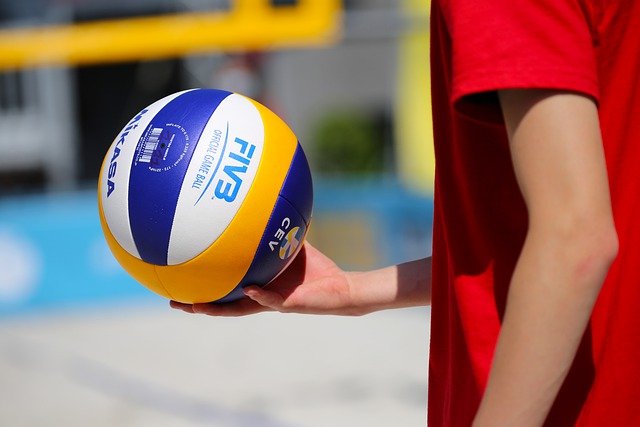Exercise. Questions and Answers about Muscular System - Science & Biology
Exercise. Questions and Answers about Muscular System - Science & Biology
This exercise consists of 36 multiple choice questions and their answers
 |
| Exercise. Questions and Answers about Muscular System - Science & Biology |
NAME :
CLASS :
DATE :
1.attaches the muscle to the bone
a)ligament
b)aponeurosis
c)epimysium
d)tendon
2.A muscle that straightens part of your body is called a(n)...
a)Extensor
b)Flexor
3.connective tissue sheath that wraps a fascicle
a)epimysium
b)perimysium
c)endomysium
4.What is skeletal muscle responsible for?
a)Responsible for voluntary body movements.
b)Carries out mostly involuntary processes like digestion and pumping blood through arteries.
c)Prevents the actin from rubbing with the myosin.
d)Rigor mortis
5.connective tissue sheath that wraps one muscle fiber
a)epimysium
b)perimysium
c)endomysium
6.What are the skinny strands that attach to either ends of the sarcomere called?
a)Myosin
b)Fibers
c)Actin
d)Myofibrils
7.What is the thicker layer of proteins in the middle of the sarcomere called?
a)Myosin
b)Fibers
c)Actin
d)Myofibrils
8.Myofibrils are divided into lengthwise fragments called __________.
a)Sarcomeres
b)Epimysium
c)Endomysium
d)Perimysium
9.tissue that connects bone to bone
a)ligament
b)tendon
c)tissue
d)muscle
10.What powers muscle movement?
a)Food
b)ATP
c)Candy
d)Sleep
11.Ion channels found on sarcolemma
a)Na + and K +
b)Na + only
c)Ca +
d)Ca + and K +
12.Chemical found in the ends of motor neurons that carry nerve impulses to the muscle fibers
a)neurotranmitter
b)enzyme
c)fascicle
d)actin
13.__________ ____________ occurs when there is no more ATP in the muscles left to make them relax.
a)Apoptopsis
b)Rigor mortis
c)Endoplasmic Reticulum
d) French Fries
14.Uses oxygen to break down glucose
a)direct phosphorylation
b)anaerobic glycolysis
c)aerobic respiration
d)fermentation
15.What is smooth muscle responsible for?
a)Responsible for voluntary body movements.
b)Carries out mostly involuntary processes like digestion and pumping blood through arteries.
c)Prevents the actin from rubbing with the myosin.
d) Rigor mortis
16.Tendons connect __________ to bone.
a)Cartilage
b)Bone
c)Muscle
d)Ligaments
17.a bundle of muscle fibers
a)actin
b)mysoin
c)fascicle
d) sarcomere
18.the neurotransmitter that gets a muscle contraction started
a)acetylcholine
b)serotonin
c)dopamine
d)acetylcholinterase
19.Which term means straightening or increasing angle at a joint.eg knee when kicking ball.
a) Circumduction
b) Rotation
c) Dorsiflexion
d) Extension
20.Which of the following are properties of muscles?
a) excitability
b) contractility
c) extensibility
d) all of these
21.amount
of oxygen needed to restore levels of ATP and creatine phosphate in
muscles plus the amount of oxygen needed to convert the lactic acid back
into glucose
a)muscle tone
b)muscle fatigue
c)oxygen debt
d)pyramiding
22.How many skeletal muscles are there in the human body?
a)550
b)230
c)950
d)640
23.regulates calcium ion levels in the muscle cell
a)sarcolemma
b)sarcoplasmic reticulum
c)sarcoplasm
24.What are the two movements of muscles?
a) Up and down
b) Lengthening and shortening
c) Left and right
d) Big and small
25.connective tissue sheath that wraps entire muscle
a) endomysium
b) perimysium
c) epimysium
26.consists of hundreds to thousands of muscle fibers, plus connective tissue, nerves, and blood vessels
a)muscle
b)fascicle
c)muscle fiber
d)myofibril
27.What are the 3 types of muscles?
a)Cardiac, smooth and skeletal
b)Cardiac, skeletal, prime
c)Flexion, extension, smooth
d)Skeletal, smooth, stringy
28.Which of the following are properties of muscles?
a)excitability
b)contractility
c)extensibility
d)all of these
29.the chemical that accumulates in muscles when oxygen is depleted
a)myoglobin
b)hemoglobin
c)lactic acid
d)carbon dioxide
30.The muscle that is contracting,causing the movement is called
a)Antagonist
b)Posture
c)Gliding
d)Agonist
31.Which term means bending,or decreasing the angle at he joint.eg lbow at upward phase of bicep curl.
a) Extension
b) Flexion
c) Adduction
d) Abduction
32.The essential function of muscle is
a)beating
b)contracting
c) elongating
d) durability
33.If Na enters the muscle fibers, what element leaves the muscle fiber?
a)Ca
b)ACh
c)C
d)K
34.What occurs when muscles are not used?
a) muscular dystrophy
b) botox
c) atrophy
d) rigor mortis
35.the smallest contractile unit of a myofibril
a)fascicle
b)sarcomere
c)myofilament
d)myosin
36.What is required in order to allow the myosin head to bind to the actin binding site?
a)glucose
b)glycogen
c)ATP
d)the Na+/K+ pump
Answer Key
1.d
2.a
3.b
4.a
5.c
6.c
7.a
8.a
9.a
10.b
11.a
12.a
13.b
14.c
15.b
16.c
17.c
18.a
19.d
20.d
21.c
22.d
23.b
24.b
25.c
26.a
27.a
28.d
29.c
30.d
31.b
32.b
33.d
34.c
35.b
36.c
Post a Comment for " Exercise. Questions and Answers about Muscular System - Science & Biology "